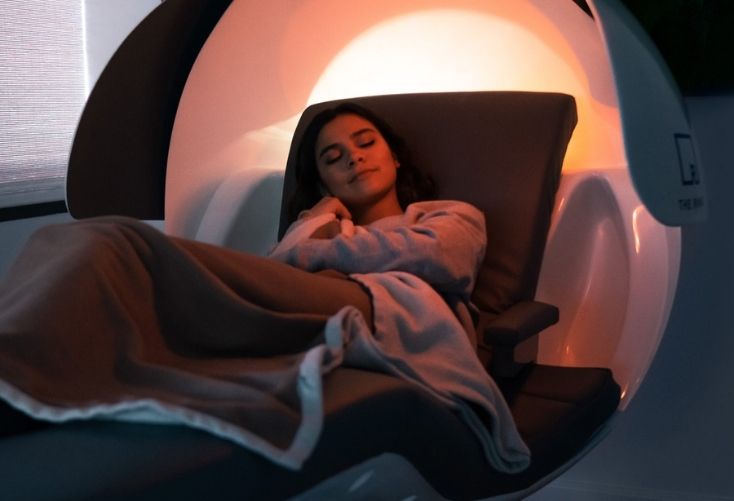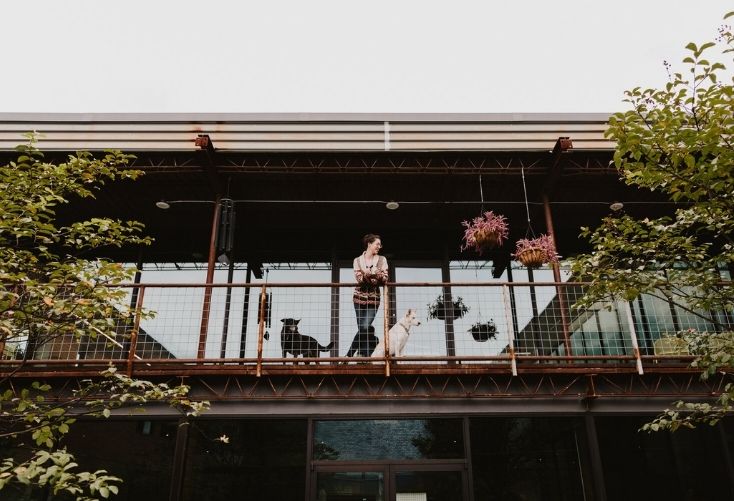- Wellness is “front and centre” of the business ecosystem’s consciousness right now.
- One study found that enhanced ventilation in office buildings can result in as much as a $6,500 equivalent in improved productivity per person per year.
- If workplaces are looking to implement a wellness strategy but don’t have a lot of funding, adopting a hybrid work-positive mindset can also help.
In the words of Amy King, co-founder of Dallas-based workspace Good Coworking, wellness is “front and centre” of the business ecosystem’s consciousness right now.
Americans, on average, spend 90% of their time in the built environment, and these environments are always conducive to wellness. The GWA’s first webinar of 2022 explored ‘Wellness Design In The Flex Office Space’.
Three experts – Amy King, Simee Adhikari and Sarah Travers – unpicked why it’s so important to let member wellness drive office design.
As Adhikari, co-founder of The Ring Workspaces explains, our sensory system evolved in the natural world, so we’re designed to be around sunlight, plants and water. Workspaces that aren’t built with this in mind can impede our ability to function well.

Adhikari’s mission with The Ring Workspaces is to “create spaces that optimise human potential.” After visiting over 100 workspaces around the world, she discovered that too few spaces are designed for occupant wellbeing, and only a handful are WELL certified.
Having experienced burnout in the past, King understands how a person’s environment can impact their wellbeing and exacerbate existing issues. From a physical perspective, she found her asthma went away when she started working in a LEED Platinum building.
Wellness design in action
The WELL Building Standard is a performance-based certification system that combines design and construction best practises with evidence-based scientific research.
Workbar runs coworking spaces in and around Greater Boston.
Its Boston Back Bay location was awarded WELL Certification by the International WELL Building Institute in 2018. It earned a distinction in the following categories: Air, Water, Light, Nourishment, Fitness, Comfort and Mind.
Notable project features include:
- Cutting-Edge Smart-Lighting Systems
- WELL-managed energy efficiency and water conservation
- Smart heating and cooling sensors that adjust room temperatures based upon the number of occupants in the room
- Healthy materials, finishes and furniture with little to no Volatile Organic Compounds
- Ultra-modern construction pollution management systems
- Water filtration system
- Environmentally-safe cleaning products

Travers explains that Workbar has been committed to designing for wellness for well over a decade. Because each space was designed with wellbeing in mind from the outset, the company hasn’t had to retrofit for wellness.
Boston Bay is seen as a flagship location for wellness, and although Workbar’s other buildings aren’t WELL Certified per se, they contain the same features and amenities.
“Every design element is intentional,” says Travers, from the random patterns in the carpets that mimic patterns in nature, to the location of each Workbar centre, each of which is situated within walking distance of residential homes.
The Ring Workspaces embraces active design. This is a design principle that integrates physical activity into people’s everyday routines.
Its conference table, for instance, can be reconfigured into a ping pong table. Conference rooms themselves are sensory – members can choose from a variety of visuals and lighting hues making for a more immersive and memorable and meaningful experience.
Good Coworking is currently pursuing LEED + WELL Building Certifications. While WELL focuses on people’s health, LEED assesses the environmental impact of a building.
Members have access to greenery in the central courtyard which they can use for relaxation or work purposes. Large windows provide ample natural light, and a grand staircase encourages members to walk between floors instead of relying on the elevator.
Good Coworking also uses the indoor air quality app Awair to monitor Co2 levels and airflow in the space. The app enables workspace operators and facility managers to track trends and receive alerts. It measures Volatile Organic Compounds (VOCs) which can impact our health and level of comfort and trigger allergies and conditions like asthma.

The financial imperative
As Adhikari acknowledges, designing for wellness can significantly boost productivity, and productivity equals cash. One study found that enhanced ventilation in office buildings can result in as much as a $6,500 equivalent in improved productivity per person per year.
Workbar took a leap of faith that its investment in WELL Certification would pay off, and it did, says Travers. It’s client retention which remains at an impressive 95%.
When it comes to Good Coworking, its members rate the space’s wellbeing efforts highly in surveys. But it’s not all about money. It’s about changing workplace culture more generally.
“Not only are we influencing our members’ health, we’re planting the seed in the companies that use our space,” says King, who hopes that startups that outgrow their space take their wellbeing learnings with them.
Leading with wellness can make spaces attractive to investors and local authorities. In 2017, the Clearwater Community Redevelopment Agency gave The Ring Workspaces a $600,000 city grant to help get it off the ground.
Property developers who are amenity-driven can look favourably on wellness-focused operators too, envisioning them as an extension of their own brand, adds Travers. As more corporations lean on coworking, brand alignment has never been more important.
Low-cost wellness solutions
King and Travers know a thing or two about doing things on a budget. Both Good Coworking and Workbar were bootstrapped businesses. “We accomplished our goals over time,” says King, who describes coworking spaces as “living labs for [wellbeing] concepts.”
If you’re looking to implement a wellness strategy but don’t have a lot of funding, King, Adhikari and Travers suggest exploring the following low-cost solutions:
- HEPA filters
- Partnering with local wellness brands
- Centralising the bins and positioning them a walk away (active design)
- If possible, include outdoor breakout space
- Dedicate some communications/programming to mental health awareness
Adopting a hybrid work-positive mindset can also help. As King says, hybrid work helps people create a more balanced life for themselves, and this is why Travers loves seeing part-time members using the space.
As well as looking at physical design elements, now’s also a good time to reflect on how you’ve designed your membership plans. Is there room for more flexibility?


 Dr. Gleb Tsipursky – The Office Whisperer
Dr. Gleb Tsipursky – The Office Whisperer Nirit Cohen – WorkFutures
Nirit Cohen – WorkFutures Angela Howard – Culture Expert
Angela Howard – Culture Expert Drew Jones – Design & Innovation
Drew Jones – Design & Innovation Jonathan Price – CRE & Flex Expert
Jonathan Price – CRE & Flex Expert












